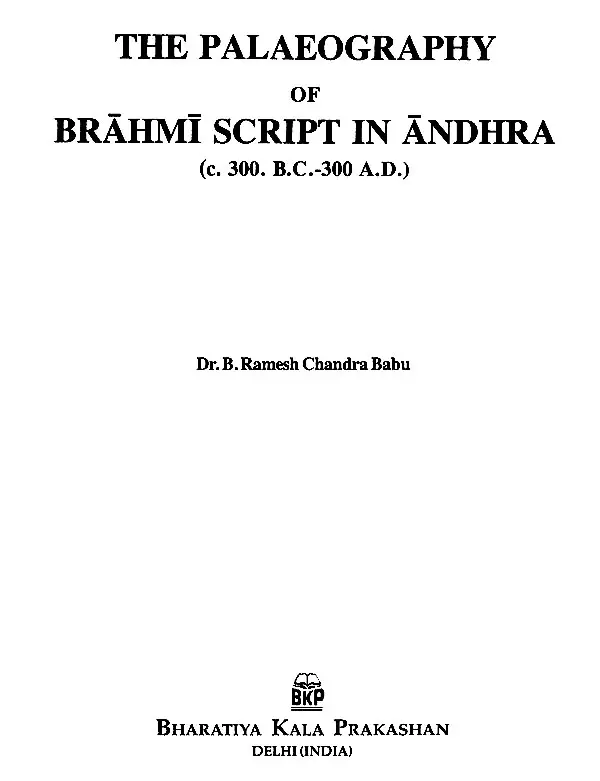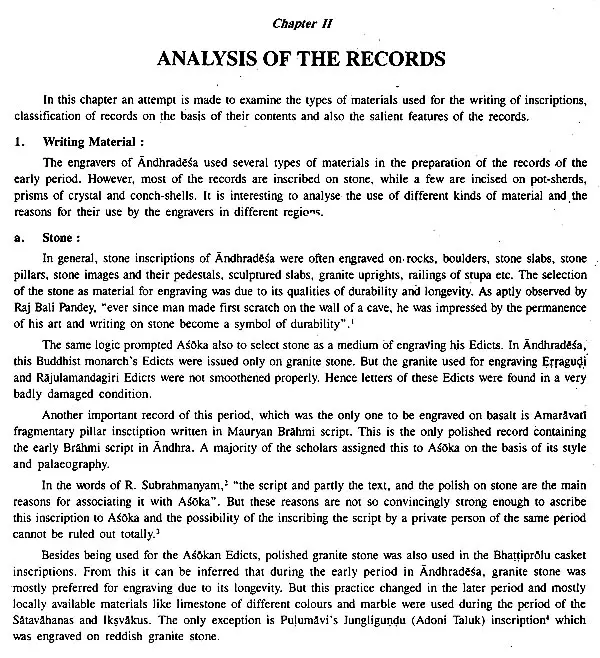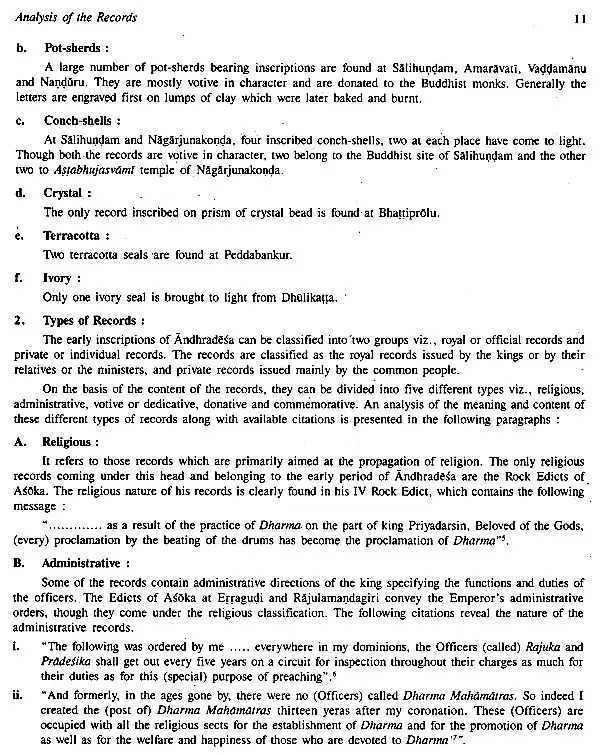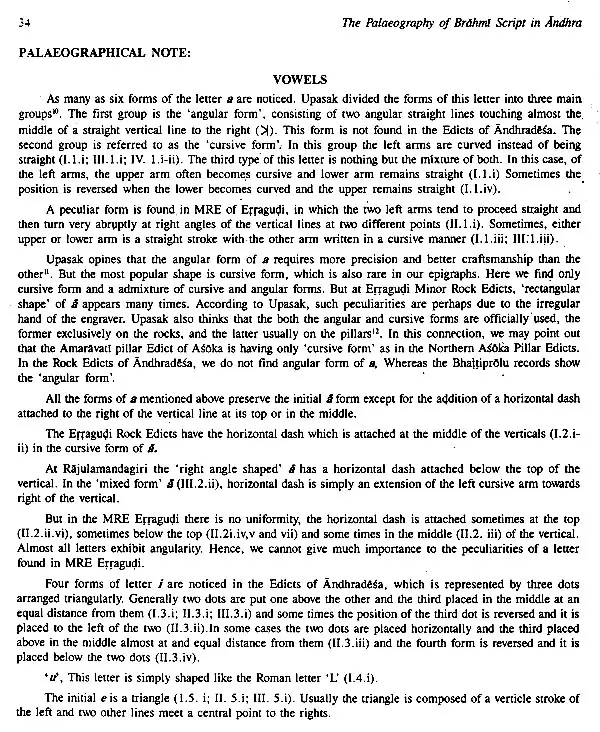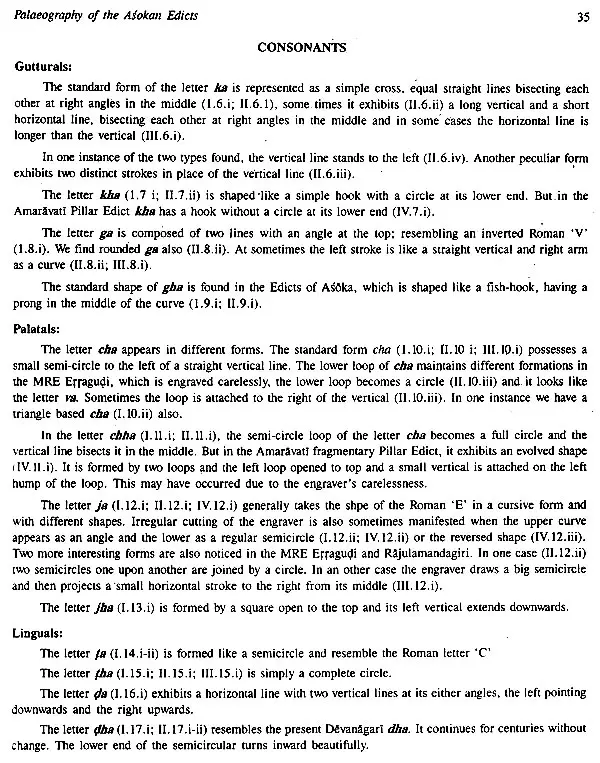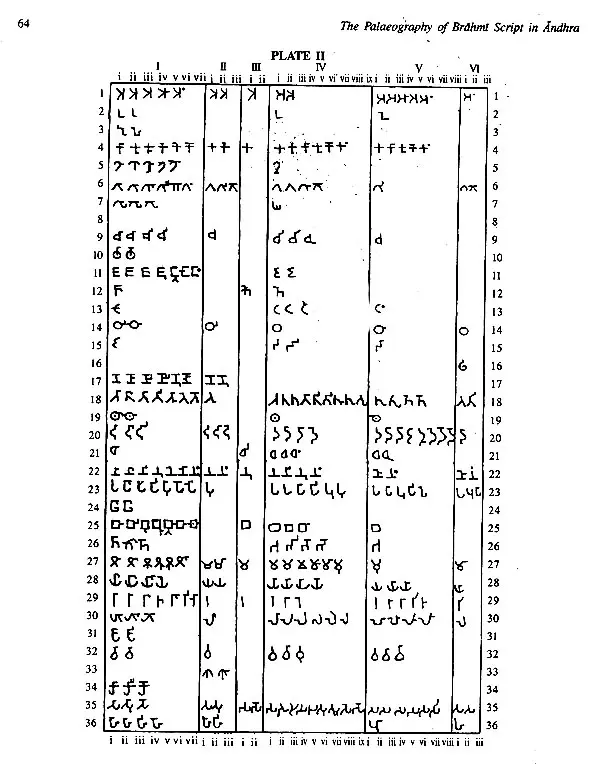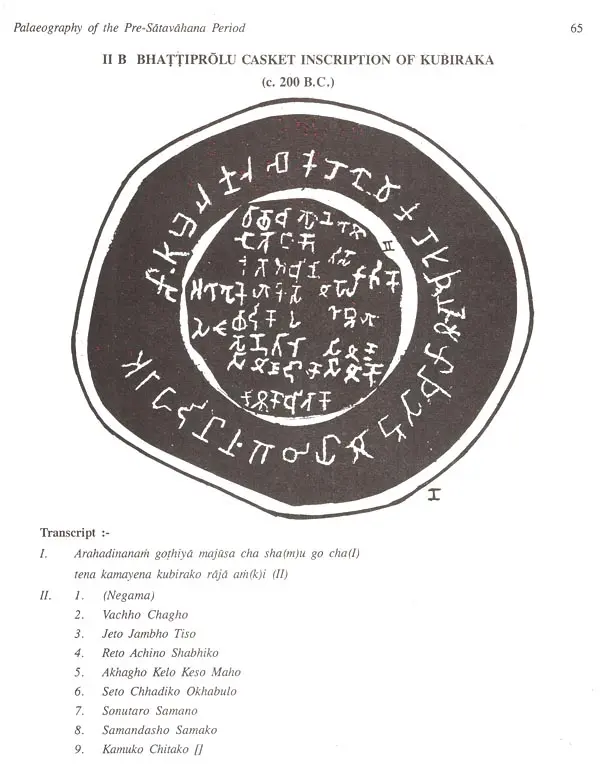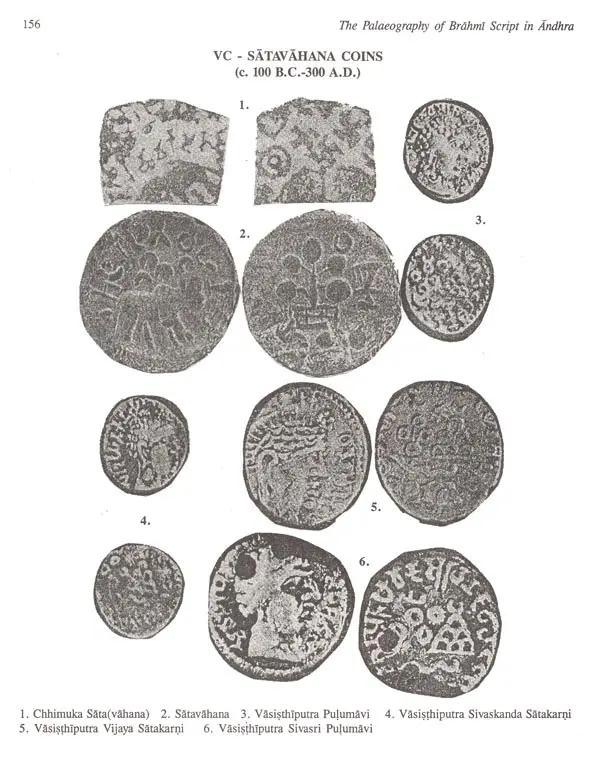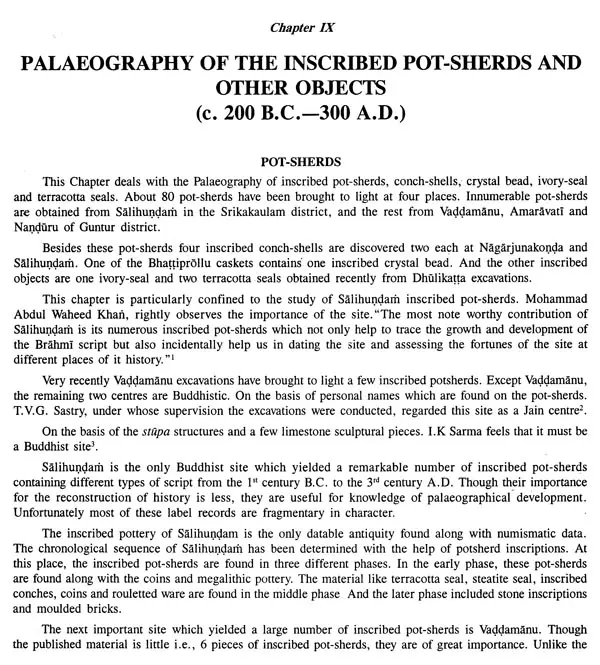
Palaeography Insert of The Brahmi Script In Andhra (c. 300. B.C.-300 A.D.)
Book Specification
| Item Code: | UAO192 |
| Author: | B. Ramesh Chandra Babu |
| Publisher: | Bharatiya Kala Prakashan |
| Language: | English |
| Edition: | 2006 |
| ISBN: | 8180901076 |
| Pages: | 208 (Throughout B/w Illustrations) |
| Cover: | HARDCOVER |
| Other Details | 11.00 X 9.00 inch |
| Weight | 830 gm |
Book Description
The Book traces the evolution of the Brahmi Script in Early Andhradesa and envisages an in depth study of the scriptual forms of early inscriptions. It embodies a meticulous study on the development of the script of the early Brahmi inscriptions, coins, seals, sealings and pot-sherds. The first three chapters deal with the topics like historical intro duction, the analysis of the records and the Epigraphical formulae. The remaining six chapters highlight the Palaeographic peculiarities of Asokan Edicts, Pre-Satavahana, Satavahana, Iksvaku records as well as early Andhra Coin legends and inscribed Pot-sherds. All the chapters contain Palaeographic Tables along with explanation.
Dr. Bellamkonda Ramesh Chandra Babu, born on 1.1.1955 at Repalle, Guntur District, A.P., did his post graduate courses in History and Archaeology, M.Phil., and Ph.D., from the Department of Archaeology and History, Andhra Univer-sity, Visakhapatnam.
He was awarded a state level Meritorious Teacher Award in 2002 for his distinguished services as a teacher in the department of History in Higher Education. He has participated in many U.G.C. Sponsored National Seminars. He contributed many research papers on Epigraphy, Art and Architecture which were published in different Journals as well as in A.P. History Congress volumes. At present he is working as Reader in History and Coordinator, NAAC, at V.S.R. Govt. Degree College, Movva. Krishna District, Andhra Pradesh which is the first rural institution in the state to be accredited by National Assessment and Accreditation Council, Bangalore. He is currently engaged in Compilation of Inscriptions of Andhradeśa, dynasty wise. His work on South Indian Palacography in Telugu is an awaiting Publication.
Serveral attempts have been made to study the palacography of the inscriptions of ancient and medieval India. G. Buhler, A.C. Burnell, G.S. Ojha, C. Sivaramamurti and A.H. Dani are the Scholars who have studied the evolution of the scripts in India. Of them, Burnell and Sivaramamurti concentrated on the South Indian palaeography. Though a large number of inscriptions have been published in different journals and monographs, carly Andhra palacography, as such is still a subject of serious study.
An attempt has been made to examine the nature and content of the inscriptions from c. 3" century B.C. to 3 century A.D. i.e., from the Maurya to the Iksvaku period and to trace the evolution of the Brahmi script in Andhrudesa. Palaeographically early Andhra inscriptions can be grouped into four phases. But the world famous Buddhist centre Amaravati has its own specific identity and we find in it both archaic as well as late stages of the Brahml script. Some inscribed potsherds from Salihundam and coins issued from c. 200 B.C. to 300 A.D. in Andhradeśa were also taken for discussion.
The main idea in taking up this study is to underscore the palaeographical part of the inscriptions and to date them. The post Asokan and pre-Gupta inscriptions are assigned to different dates on various considerations, one of which is palaeography as well. This can be substantiated, if the issuers of the inscriptions were royal personages. In the case of the private records, it is very difficult to assign a date. But the totality of the inscriptions in Andhra is construed to date the private records and also a comparative study has been undertaken to fix the dates of the inscriptions need not be considered as final, and they are subject to correction. in the light of new discoveries or different interpretations that can be advanced.
The method of study runs parallel to that adopted by TP. Verma in his work entitled The Palaeography of Brahml Script in North India while tracing the evolution of the North Indian scripts of the post-Asokan period. C.S. Upasak's book, The History and Palaeography of Mauryan Brahmi Script is also found very helpful in carrying out the present work.
The work is presented in nine Chapters. Chapter I includes introduction and historical background of the study. The history of the pre-Satavahana period is highlighted in view of the recent discoveries at Kopalingala. Otherwise the Asokan rule, Early and Later Satavahana authority followed by the Iksvakus is narrated with the help of inscriptions, coins and Puranic literature. From the evolution of the script, it is felt to study the history of the Satavahanas whose rule began from the I century B.C.
In the Second Chapter an attempt is made to examine the type of materials used for the writing of inscriptions, such as stones, pot-sherds, conch-shells and terracotta objects.
In the Third chapter entitled 'Epigraphical formulae of the records' have examined the different types of Initiation, Invocation, Benediction and Imprecation that we meet with and also the various ways of concluding the inscriptions by giving suitable examples.
The Fourth, Fifth, Sixth and Seventh chapters are the core Chapters which trace the palaeography of the stone inscriptions .e.. Adokan Edicts, Pre-Satavahana inscriptions, Satavahana inscriptions and Iksvaku inscriptions
Books on Indian Epigraphy are rare; still rarer are those on Palaeography While everybody recognises the importance of epigraphy as a source of ancient Indian history, very few learn palaeography. They are content with the published texts and translations of inscriptions and they never verify the readings of inscriptions with the originals.
In this context, it is gratifying to note that an attempt is made by Dr. B. Ramesh Chandra Babu to trace the evolution of the Brahmi script in Andhra during 3 century BC-3 century AD. This is one of the most difficult periods, where even the history of the Satavahanas and Ikshvakus, not to speak of minor families like the 'Sadas', is controversial. The rule of the Satavahanas in the Andhra area, their period of rule, the place of the Sadas and rulers like Somaka, Kubiraka in Andhra history are all disputed. Taking palacography into consideration, Dr. Ramesh Chandra tried to solve the problems in respect of chronology of the Satavahanas and also the many private records at Amaravati and other places.
The work is replete with Tables and charts which illustrate the changes in the script over a period of six centuries. He has utilized coins, pot-shreds and conches, in addition to epigraphs, in tracing the evolution of the script.
This work, I hope would enthuse others in taking up palaeographical studies of other regions in the country, which would give us a picture of the developments in Brahmi and other regional scripts. Taking the work of Dr. Ramesh Chandra to be a model, the palaeography of the Brahmi script of in Andhra Pradesh at various periods has to be studied.
Book's Contents and Sample Pages
